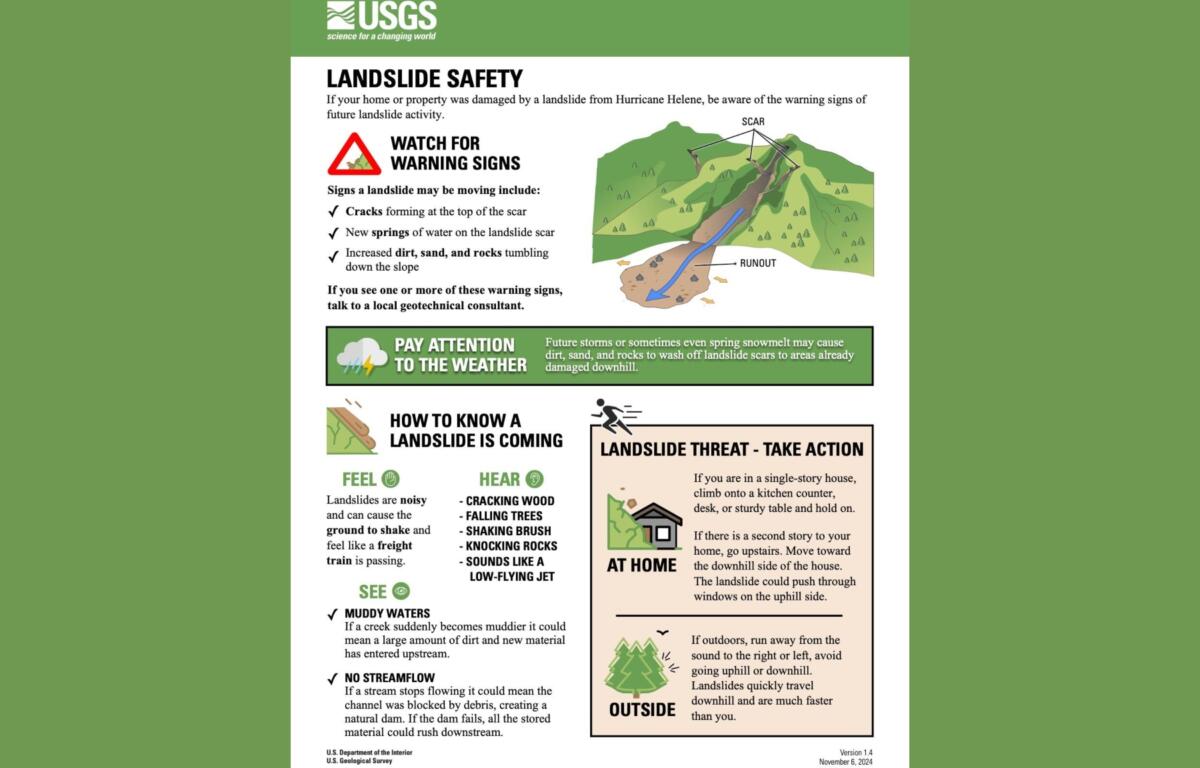ASHEVILLE, N.C. (828newsNOW) — Tropical Storm Helene unleashed more than 2,200 landslides across Western North Carolina and surrounding areas following its landfall in September 2024, according to a post-storm report from the U.S. Geological Survey.
Understanding what happened then could help scientists save lives when the next storm comes.
Helene, which brought historic rainfall totals after combining with earlier weather systems, oversaturated slopes and triggered flooding and debris flows across the southern Appalachian region. Many scientists say the damage rivaled some of the most destructive weather events in the area’s history, including the floods of 1916 and 1940, Hurricane Camille in 1969 and the twin storms Francis and Ivan in 2004.
“The speed and movement of the mudflows and landslides were truly devastating,” said Sara McBride, a USGS research social scientist. “Although the landslide susceptibility map, we published the month prior to Helene indicated that this area could experience damaging landslides, the actual size and scale was exceptional.”
Initial estimates recorded roughly 2,000 landslides, but updated analysis using satellite imagery, aerial reconnaissance, media reports and on-the-ground field investigations increased the total to 2,217. McBride noted that many more slides may still be undiscovered beneath forest canopies.
One particularly hard-hit location was along Interstate 40 near the North Carolina-Tennessee border, where a previously vulnerable slope gave way earlier this month.

REPORT SUMMARIZES THE U.S. GEOLOGICAL SURVEY’S INITIAL LANDSLIDE RESPONSE EFFORTS
Most slides occurred on southeast-facing slopes where Helene’s winds and rainfall hit hardest. Nine counties — Avery, Buncombe, Henderson, McDowell, Mitchell, Polk, Rutherford, Watauga and Yancey — were among those most affected. Areas with the highest concentration of slides included Bat Cave, Lake Lure, Chimney Rock, Swannanoa, Black Mountain, Fairview, parts of Asheville and sections of the Blue Ridge Parkway.
“This event showed us the extreme end of what’s possible in this region,” said Stephen Slaughter, a USGS geologist. “Even though we knew landslides were possible, seeing the full impact on the ground was something else entirely.”
While no slides posed an immediate threat to recovery crews, the USGS warned that loose soils and debris on steep slopes remain unstable and could be reactivated by heavy rain or construction work.
The agency credited partnerships with the North Carolina Geological Survey and private landowners for helping collect detailed data. Findings have been shared with local emergency operations centers to aid in recovery planning and long-term risk mitigation.
Officials are urging local governments and residents to educate themselves on landslide risks. The North Carolina Geological Survey’s interactive “Landslides in Western North Carolina” tool and the USGS’s national landslide susceptibility maps and safety brochures are available to the public.
“Understanding landslides and knowing what to look for can save lives,” McBride said. “The resources are there. We just need people to use them.”


